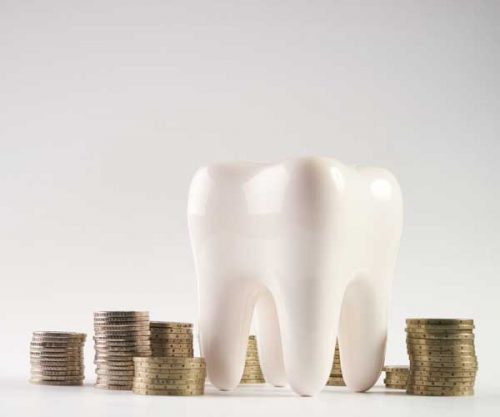The need for dental care doesn’t end when you retire, but Medicare provides no dental benefits and dental insurance coverage is often too low when you need expensive procedures. Dental savings plans help you save money on routine dental care and more expensive procedures like bridges and dentures. You can even use them with your current dental insurance policy. Here are four factors to consider when choosing a dental savings plan.
- Know How Dental Savings Plans Work
Dental savings plans differ from dental insurance. While insurance pays for all or a part of your dental work, dental savings plans provide discounts on dental procedures. Show your dental savings plan card when you arrive for your appointment or call in advance to confirm the discount amount. You will know the cost before you have a cleaning, are fitted for a bridge or have another procedure. Here’s a snapshot of how dental savings plans work:
- Dental savings plans typically cost around $100 to $200 annually.
- Discounts are given at the dental office, then you pay for services before you leave the office or set up a payment plan with your dentist.
- Dental savings plans have no deductibles, no maximums and no waiting periods.
- Discounts run from 10 to 60 percent for dental procedures.
- Dental savings plans are especially helpful for expensive procedures such as bridges or dentures.
- Combine Dental Insurance and Dental Savings Plans
You can use a dental savings plan in tandem with a dental insurance policy to keep your out-of-pocket expenses to a minimum. While you can’t use both for one visit to the dentist, dental savings plans can pare down your costs after you reach your dental insurance out-of-pocket maximum.
Dental savings plans are very helpful when you need a costly procedure but your insurance has a waiting period before you can receive benefits. Dental savings plans have no waiting periods and can be used to save substantially on dental costs until insurance coverage begins.
- Consider Costs
Dental saving plans cost anywhere from around $80 to $350 per year. To determine whether a dental savings plan is worth it, consider the average American spends about $350 a year, or $15 to $50 per month on dental care. The cost of uninsured dental care varies quite a bit depending on where you live. Costs for frequently-needed dental procedures span from:
- Cleanings and routine examinations: $150 to $327
- Fillings: $160 to $200
- Root canals: $2,500 to $3,000
- Dentures: $1,400 to $3,200

You can call your dentist’s office to request a list of costs, or use the dental cost calculator from FAIR Health Consumer, a nonprofit that analyzes dental and medical costs from across the country. Remember to ask your dentist what dental savings plans they accept.
Once you have an idea about how your dental costs can add up, get a firm quote on a dental savings plan. Add the annual fee for the savings plan to the total cost of an expected procedure, then subtract the savings the dental plan provides for that expense. Compare that total to what you would pay straight from your wallet and decide if the savings outweigh the cost of the plan. Even if the savings are minimal, keep in mind the plan will help you save on unexpected dental procedures.
For example, dental insurance policies usually cap their coverage at around $1,500 a year. If you need a root canal, the cost covered by your insurance might only cover the first $1,500. Using a dental savings plan can help supplement the additional costs.
- Shop Around
Dental savings plans vary widely in price and in coverage, so it pays to do your research. While a friend’s experience with a plan can be taken into consideration, make your decision based on the facts you find. Talk to your dentist’s office to find out what dental savings plans they work with.
Dental savings plans are available through associations, groups like AARP and major insurance companies. DentalPlans.com can help you compare dental savings plans in your area and across the country if you reside in different states over the year.
The Bottom Line
Dental savings plans can be a viable option for dental care in your retirement years. The majority of plans have no waiting period for any procedure, but it’s best to sign up one after you determine it will save you money in the years to come. Understand the difference between dental insurance and dental savings plans before buying either. It never hurts to check with your local Better Business Bureau to be sure a dental plan provider has a clean record.


